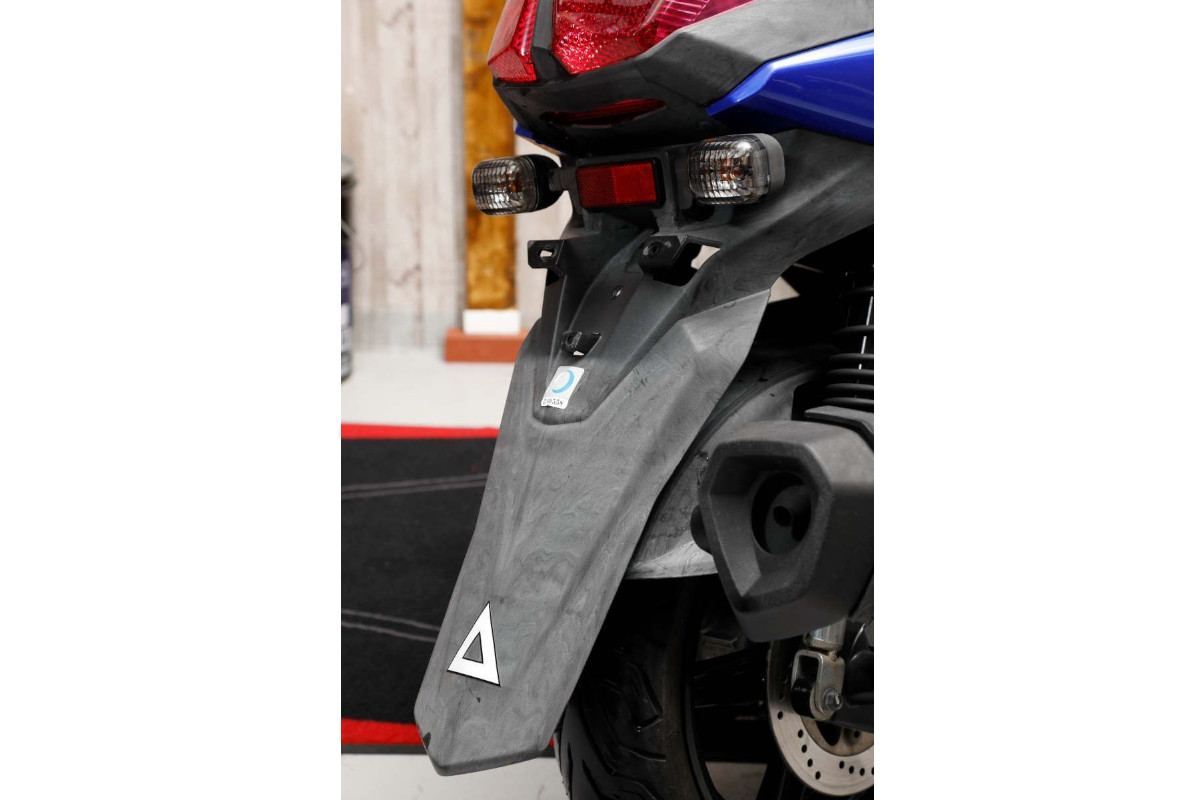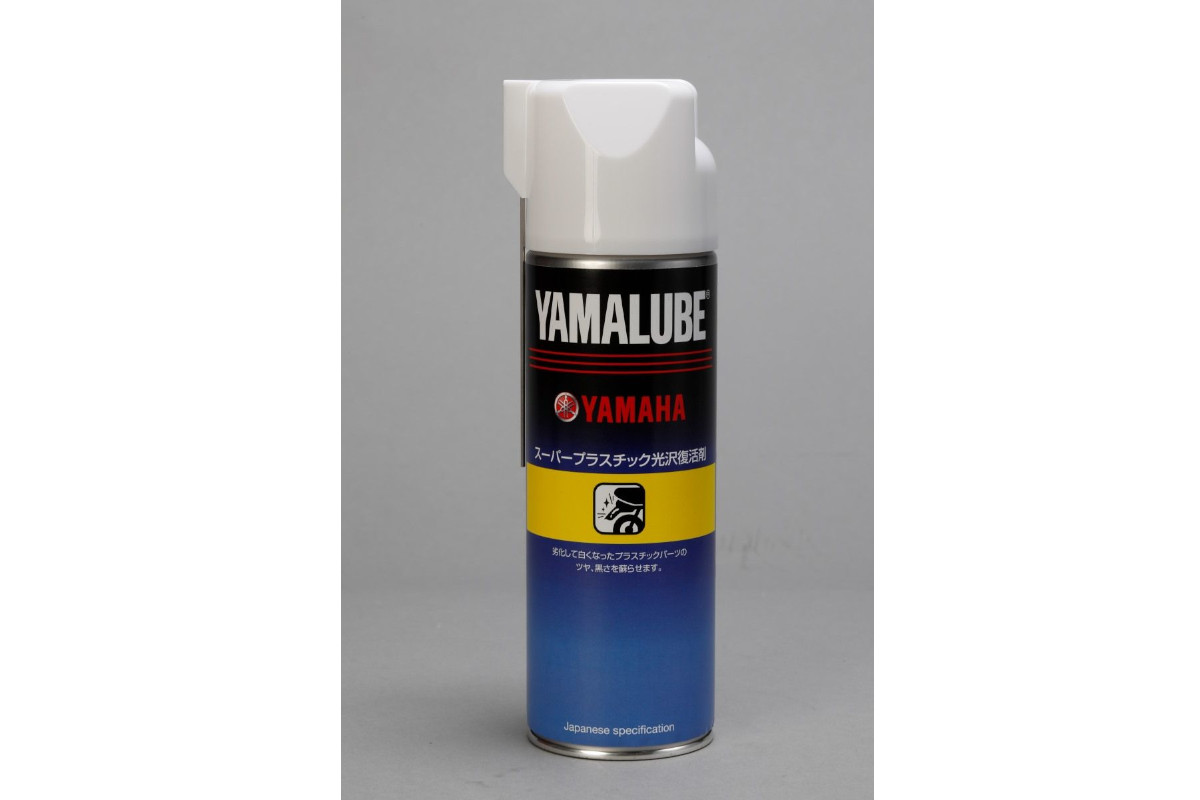Resin parts used in various parts of motorcycles are classified into two types: painted finish and unpainted finish. The biggest weakness of unpainted parts is the deterioration caused by the whitening, which is the loss of surface luster and color over time, resulting in a white, crusty appearance. The most effective solution for whitening that cannot be improved by car washing or waxing is to use a coating-type gloss restorer, which can be expected to restore the natural texture.
- Outdoor storage is the biggest factor in the surface deterioration of unpainted parts
- Many unpainted parts are made of polypropylene, which is difficult for paint to adhere to.
- Silicon spray or heating may improve bleaching.
Outdoor storage is the biggest factor in the surface deterioration of unpainted parts


A weakness unique to polypropylene material is that its surface turns white when exposed to ultraviolet rays, even if the car is washed and maintained without fail. PP is often used for motorcycle fenders, steps, chain covers, and other lower parts, but it is also used in bumpers and side moldings in automobiles, and whitening is a major factor in spoiling the appearance.
Resins used for motorcycles include ABS, PP, PE, FRP, and various other materials. Of these, PP (polypropylene) is characterized by its lightweight, high heat and chemical resistance, low cost, and suitability for mass production. It also has good mechanical strength and abrasion resistance, so it is widely used for footwear and undercarriage parts such as rear fenders and scooter-type steps. Furthermore, by adding a coloring agent, toner, to PP during heat molding, it can be used without a painting process after production, making it cheaper to manufacture than ABS resin, which requires painting.
On the other hand, it also has a weakness in that it is generally susceptible to ultraviolet rays and is prone to whitening, which causes it to turn white outdoors. This is true for both black and colored finishes, and even if there is no functional problem, it accentuates the poor appearance. There are additives that inhibit whitening, but they do not completely overcome the intrinsic weakness of being vulnerable to UV rays. Bleaching of PP parts, whether for motorcycles or automobiles, is inevitable. The reason why PP parts continue to be used despite the decisive problem is that the advantages outweigh the disadvantages when judged comprehensively in terms of function and cost.
Many unpainted parts are made of polypropylene, which is difficult for paint to adhere to.


Y’s Gear, which plans and sells genuine Yamaha Motor accessories and apparel, has a very complete lineup of chemicals. In addition to cleaners and waxes for painted parts, the company also offers a gloss revival agent for whitened resin parts. The image shows a large volume type containing 500 ml for professional use, and there is also a smaller volume type containing 180 ml.
When painted parts such as gasoline tanks and tail cowls deteriorate, they can be repaired by repainting. However, PP parts that are colored with toner during the molding process are not suitable for painting. This is a characteristic of PP, regardless of whether it is colored or not, and it is known as a material that is difficult to paint or bond. When painted on highly flexible PP, the paint film that hardens after drying cannot cope with the deformation of PP and peels off. Although there are curing agents available for two-component urethane paints that coat PP materials with a base adhesive and maintain flexibility even after curing, there are no such products available for one-component canned sprays.
For black PP parts, Daytona offers a canned spray that can be directly applied (product name: PP Resin Black), which can be used to repaint black PP parts such as fenders and inner cowls.
However, since this spray paints, it is necessary to mask off areas other than the painted area when spraying on PP parts that are still attached to the vehicle body.
Silicon spray or heating may improve bleaching.
To improve the whitening of PP parts, silicon sprays sold at home centers may be effective.
Even if we speak of silicone sprays in a few words, the content ingredients vary depending on the manufacturer’s product, and not all of them will give a satisfactory finish, and there are considerable differences in gloss and durability. Some silicones that specialize in gloss and mold release work are unnaturally shiny, and some products do not have good outdoor weather resistance. This is due to specifications rather than good or bad performance, so there is nothing we can do about it.
As a method that does not rely on chemicals, black PP can be heated to restore its luster.
By using a gas torch or heat gun with a cassette gas cylinder as a heat source, whitened PP can be seared to bring back the black luster of the new PP. However, the direct flame of a gas torch far exceeds the melting point of PP, so there is a risk of deforming the parts depending on how the torch is used. Heat guns are not as likely to deform parts as torches. However, it takes time for the temperature to rise, and uneven searing may cause shading in the black luster.